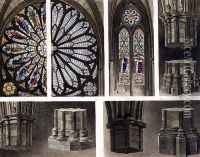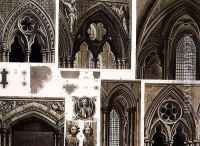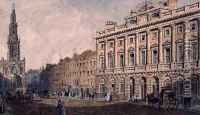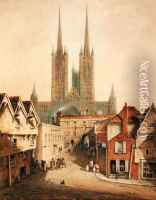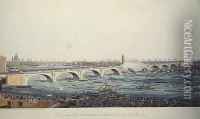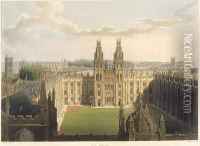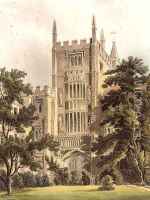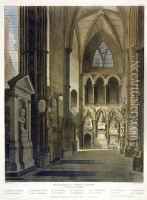Augustus Charles Pugin Paintings
Augustus Charles Pugin, born in 1762 in France, was an artist, architectural draughtsman, and writer on medieval architecture, who later settled in England. He was a pioneer in the Gothic Revival style and is best known for his detailed drawings and illustrations that depicted medieval architecture. Pugin's work played a crucial role in popularizing the Gothic style in the early 19th century.
Pugin's family fled France during the French Revolution, and he subsequently grew up in England. He initially trained as a draftsman in the office of a surveyor. This period was crucial for the development of his skills in architectural drawing. He soon began working independently and contributed illustrations for books on architectural subjects. His attention to detail and his passion for the Gothic style were evident in his work.
In 1821, Pugin published 'Specimens of Gothic Architecture', which was followed by 'Examples of Gothic Architecture' in 1831. These publications were instrumental in his career, showcasing his expertise in the Gothic style and influencing both public taste and architectural practice. Pugin's contribution to the Gothic Revival movement was not only through his publications but also through his role as a teacher. He instructed his students in the principles of Gothic design and the importance of historical accuracy in restoration.
Augustus Pugin is also remembered as the father of Augustus Welby Northmore Pugin, a more famous Gothic Revival architect who was responsible for the design of the interiors of the Palace of Westminster. The younger Pugin was heavily influenced by his father's passion for Gothic architecture and continued his legacy in promoting the style through his own significant works.
Augustus Charles Pugin's legacy is characterized by his dedication to the revival of medieval architecture and the dissemination of its principles. His illustrations remain valuable resources for the study of Gothic architecture. He died in 1832, leaving behind a body of work that continues to be celebrated for its influence on the Gothic Revival movement in England and beyond.

